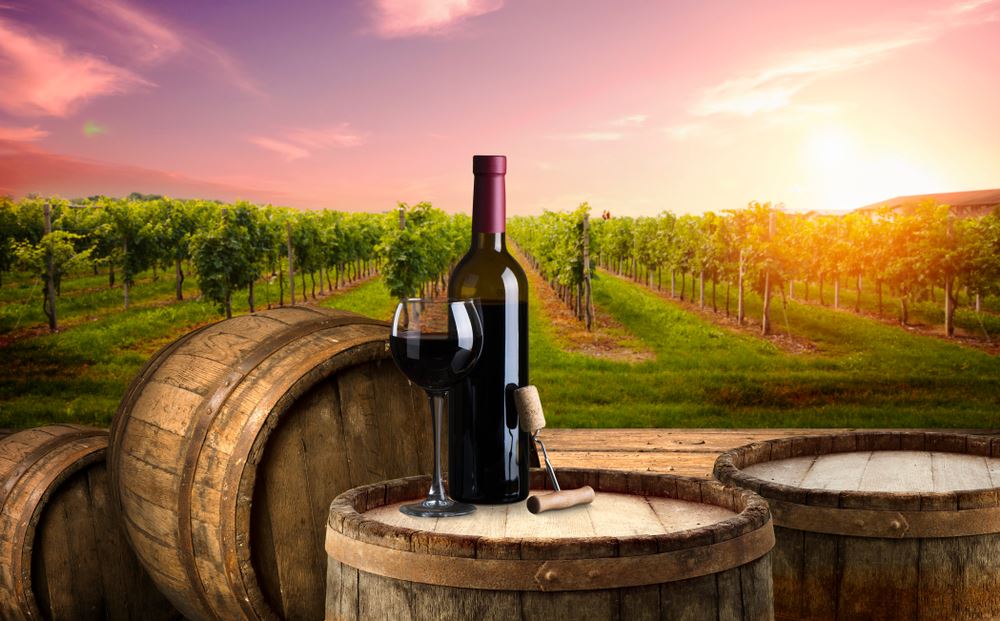
Chianti wineries: which ones to visit?
Oct 18, 2020
In this short guide we want you to discover the best wineries in Chianti . The small selection of wineries that we propose here has been drawn up taking into account some essential factors: the quality of the wine, the beauty of the cellar and the surrounding area, the ability of the farm to welcome visitors to offer tastings and direct sales. .
Chianti Wineries: getting to know the area and appreciating it to the fullest

Who doesn’t know Chianti? Among the most consumed Tuscan wines from north to south of the boot, Chianti is also one of the most exported Italian red wines abroad. But what are we talking about when we refer to Chianti?
Which provinces are involved in the production of Chianti wine?
Historically, the Chianti region is the one that extends between the provinces of Florence and Siena . It was the Grand Duke Cosimo I in 1716 who established the first territorial boundaries to the production area of this wine. Here in the Tuscan countryside, the composition of the soil, the particular slope of the hills and the characteristic microclimate are the essential ingredients for the production of the precious Sangiovese grape nectar. A vine that has been cultivated and grafted in Tuscany since the time of the Etruscans.
Chianti wineries: how to choose them

Where are the best wineries in Chianti located? The answer to this question is not that trivial. There are certainly areas with a greater vocation, but the quality of the wine essentially depends not only on the territorial imprint (terroir), but also on the work that is done in the cellar. Basic Chianti has a minimum alcohol quantity of 11.5%. A wine whose alcohol content would normally be around 12.5 degrees. It is the winemaking process, aging and other factors that make this wine decidedly more structured and graded, as befits the contemporary taste.
Cantine del Chianti Classico Riserva
The Chianti Classico Riserva is put on the market after at least two years in wooden barrels and three months in the bottle.
Monteraponi Chianti Classico Cellars
Monteraponi is a small village located on a hill within the municipality of Radda in Chianti. The Monteraponi organic farm has been noted for its Chianti Classico Riserva Campitello, an elegant and fragrant wine. A visit to these cellars, set in an enchanting setting, will not disappoint lovers of the Tuscan wine tradition.
Chianti Classico Volpaia cellars
Still in the municipality of Radda in Chianti, that of Castello di Volpaia is a unique winery, spread throughout the village of Volpaia, completely dedicated to the production of wine. Here you will find all the vintages of a wine that has been bottled since 1968. In addition to visiting the various vinification and aging environments, you can stop and eat in one of the local restaurants.
Visit Cantine Chianti: our advice for non-experts
It takes time to get closer to the world of wine. The advice we want to give to the less experienced is to start from the essential. To become minimally expert, or at least develop a taste for good wine, it is highly recommended to visit a farm where all the phases are covered, the vine is grown, the grape juice is fermented, and the wine is bottled. myTour takes you to live a unique experience in this sense, a dinner among the Chianti vineyards in which starting from sunset you will discover all the processes, the secrets, the people behind a bottle of wine. This tour takes place with departure from Siena Dinner and tasting in Chianti from Siena or from Florence Dinner and tasting in Chianti from Florence aboard our comfortable vehicles.
Geography of a territory: the municipalities within the Chianti Classico
Today the area called Chianti Classico includes the municipalities of San Casciano Val di Pesa, Barberino Tavarnelle, Greve in Chianti (province of Florence) and Castellina in Chianti, Radda in Chianti, Castelnuovo Berardenga, Poggibonsi and Gaiole in Chianti (province of Siena) where Chianti Classico DOCG is produced.
The other Chianti DOCGs
Over time, other contiguous areas have been included in the Chianti DOCG wine production area . The Chianti wine region embraces five provinces in Tuscany. Starting from 1932, alongside the aforementioned Chianti Classico area, six other areas have been added: Colli Aretini, Colli Fiorentini, Colline Pisane, Colli Senesi, Montespertoli (Fi), Montalbano (Pt) and Rùfina (Fi).
In short, are you ready to enter a cellar where Chianti is produced? Write us for more information or visit this Chianti Tour page to see the list of food & wine tours available.
 Spanish
Spanish French
French German
German
